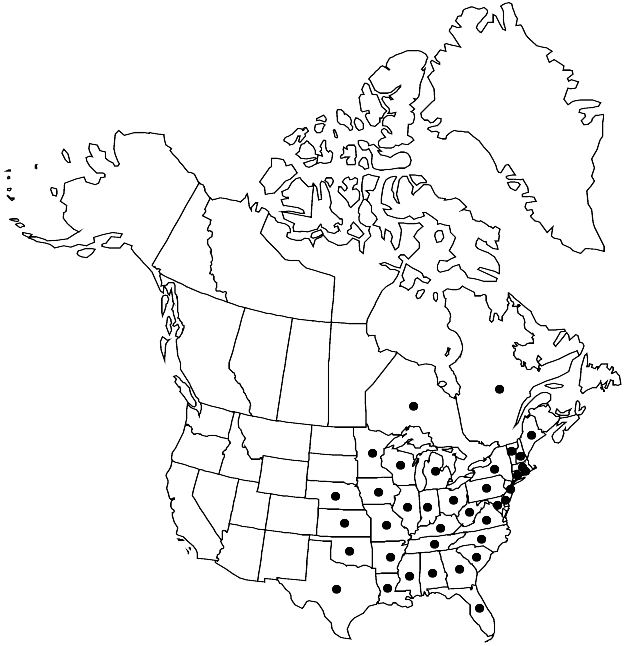Thelia asprella
in A. Gray, Manual ed. 2, 660. 1856.
Stems creeping, densely and regularly 1-pinnate, often densely tomentose, branches simple; paraphyllia not seen; pseudoparaphyllia filamentous. Stem and branch leaves ± similar, 0.8–1 mm; margins plane throughout or erect to somewhat incurved basally, plane distally, ciliate basally, ciliate-papillose distally; apex broadly acute to obtuse, acumen spreading-piliferous, occasionally long-apiculate; laminal cells rhombic nearly throughout, 12–20 × 8–12 µm, papillae usually 3–6-branched. Seta 0.8–1.2 cm. Capsule 2–2.5 mm; operculum 1–1.3 mm. Calyptra 2–3 mm. Spores 6–10 µm.
Habitat: Tree trunks, rotting stumps, humus, soil at base of trees, over rock, on ground
Elevation: low to moderate elevations (20-800 m)
Distribution

Ont., Que., Ala., Ark., Conn., Del., Fla., Ga., Ill., Ind., Iowa, Kans., Ky., La., Maine, Md., Mass., Mich., Minn., Miss., Mo., Nebr., N.H., N.J., N.Y., N.C., Ohio, Okla., Pa., R.I., S.C., Tenn., Tex., Vt., Va., W.Va., Wis.
Discussion
Thelia asprella is a fairly small species that usually grows in large, dense mats at the base of trees. Thelia asprella and T. hirtella are nearly identical in aspect; both species have terete-foliate, regularly branched, densely radiculose stems, and piliferous leaves. Thelia hirtella differs from T. asprella most clearly in having unbranched laminal cell papillae; in addition, the leaves in T. hirtella are dimorphic with stem leaves much larger and more densely ciliate than the branch leaves. Thelia lescurii is a larger plant than T. asprella that nearly always grows on soil or over rocks. In the field, T. lescurii can often be distinguished from T. asprella because its short-apiculate leaves give the plants a smoothly imbricate appearance. In T. asprella, the piliferous apices are often spreading, giving the plants a ragged appearance.
Selected References
None.
Lower Taxa
"-fid" is not declared as a valid unit of measurement for this property. "spurred" is not a number.